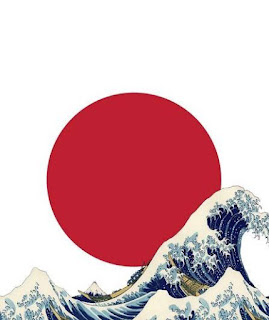Traditional costumes and fashion in Japan
1. What is Kimono
The Kimono is a traditional Japanese garment. Kimono ( ki + mono = "worn + object", "object that is worn") means garment and has come to denote these full-length, usually robes. Kimonos are often worn for important festivals or formal occasions as formal clothing.
2. Where do people wear Kimono
People in Japan wear kimono when they have weeding, coming-of-age ceremony. It's also woren for high school or collage graduation. We learnt also that there is something like "Adult's day" and on this occasion, people wear Kimono too.There are different kinds of Kimono for different occasion.
3. Different kinds of Kimono
People in Japan wear kimono when they have weeding, coming-of-age ceremony. It's also worn for high school or collage graduation. We learnt also that there is something like "Adult's day" and on this occasion, people wear Kimono too.
There are different kinds of Kimono for different occasion. For example:
1) Furisode - translates as swinging sleeves. Furisode are the most formal kimono for unmarried women, with colorful patterns that cover the entire garment.
2) Hōmongi - translates as visiting wear. Characterized by patterns that flow over the shoulders, seams and sleeves.
3) Iromuji - They are mainly worn to tea ceremonies
4) Komon - This style is more casual and may be worn around town, or dressed up with a formal obi for a restaurant
5) Edo komon - type of komon characterized by dots arranged in dense patterns that form larger designs. May be worn as visiting wear.
6) Mofuku - formal mourning dress for men or women. Both men and women wear kimono of plain black silk with five kamon over white undergarments and white tabi.
5. Kimono in modern fashion
The kimono as we know was using mainly in Japan’s Heian period (794-1192).
With many samurai to dress, kimono makers improved their craft to such an
extent that it became an art form. As kimonos became more valuable and more
collectable as pieces of art and not simply as apparel, families preserved them
as heirlooms to hand down to future generations.
That’s not to say that an appreciation of the kimono
today has to be all about historical artefacts. Today,
the kimono is back in fashion.
There are some examples:
1. This is the cover of Vogue magazine illustratinga
woman wearing a yellow kimono, sitting at a window with a child beside her
2. Akiko
Fukai, fashion designer is best known for running, for several decades, the
Kyoto Costume Institute, Japan’s leading fashion museum. Her gaze rests
currently on the trend towards updating the classic kimono. These traditional
dresses are having a modern-day makeover from multiple.
3. French
label A.guery is one of many modern brands creating interesting interpretations
of Japanese design
4. A number of items from Vionnet's spring/summer 2018 collection were a fresh take on the ancient Japanese apparel
5. British brand Holland Street produces printed kimonos as loungewear, featuring bold hand-drawn designs on crêpe de Chine silk
6. This is furisode-dress. Kimono-inspired dress for unmarried woman.
6. Colors and patterns of Kimono
Hana asagi- Blue evokes elements of the natural world: the sky and the
ocean. The name for this particular shade of blue denotes a pale green-blue
enhanced by flowers. the dye is mixed with juices squeezed from blue
dayflowers.
Momo- iro - In Japan, pink is a color associated with springtime peaches
were more common (because of the price). The fuchsia hue—pale with a hint of
yellow—is realized through a combination of plum vinegar and reduced safflower
dye
Known
as a sacred color, red represents life’s vitals: the dawn, fire, and blood. The
same pigment is still used in many of today’s makeups and food coloring.
Since ancient times purple has been a color of royalty in many parts of
the world, and Japan is no different. This shade of deep purple is created through a blend of purple dye with vinegar and lye. It was
reserved for the kimonos worn by Japan’s highest-ranking individuals.
The hue connotes the harvest season and is regarded as a noble color. The
pigment behind this shade of bright greenish-yellow is created from a liquid
extracted from the mandarin orange trees, then combined with lye to produce a
tint. The extract was also an effective insect repellant.














Komentarze
Prześlij komentarz